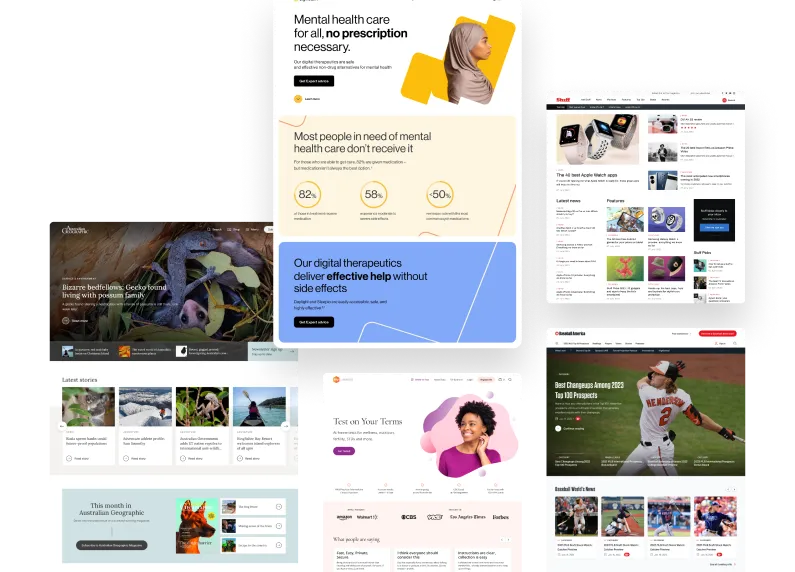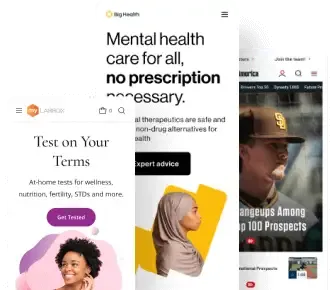Here at XWP our designers are a team of leaders who embed with other design and engineering teams at an enterprise scale. We specialize in User Research and Analysis (UXR), Visual Design (UI or UXD), and User Experience Writing (UXW). Product Design and leadership are at the heart of our collaborative work with our clients and engineering teams.
Recently we had the opportunity to attend a series of Master Classes on the subject of User Experience and Product Design hosted by Future London Academy. These events are leadership-focused and provided plenty of tangible insights about how other teams make an impact and employ different methodologies within their companies, for their teams, and for the people using their products.
A Full Week’s Worth of UX, Product, and Service Design
Each day of the Masterclass featured a pre-recorded presentation followed by a live Q&A session. This style works well for participants to listen at their own pace/time throughout the week. Additionally, there were awesome cohort sessions where we could network, meet new people, and share resources and answer questions for each other. Ekaterina Solomeina, the co-founder of FLA, has constructed a compelling experience for busy participants with a growth mindset.
“The week was jam packed with amazing presentations, and we saw validation of our own processes as well as plenty of learning opportunities to bring to our work.”
– Joshua Wold, UX Designer @XWP
Day 1
Carolyn Chmielewski, Senior UX Researcher at Spotify, talked about how to improve your UX research with empathy. The research and organizational structures she shared were incredibly useful. I loved the question she posed to teams, “If you could know one thing about your users right now, what would you want to know?”
For example, when working on the Unsplash for WordPress plugin, we wanted to know the processes authors most commonly used to add images in their posts. What was their workflow like? Where did they source images from? Were they frustrated by the experience of resizing and going outside of their immediate work space or dashboard to set up featured images etc? Were they informed enough about copyright and royalty issues when selecting images to publish safely? It is not always ‘one thing’ we need to know about our user’s needs but by asking the question among our teams we were able to unlock all of the research questions we needed to be able to answer and the tasks we needed to observe people doing. Smart observable research ensures we are building the right things for both our clients and the people using our products.
Day 2
Human-centred design methodologies that turn moments of frustration into a moment of delight from Clara Gaggero Westaway, Co-founder & Creative Director at Special Projects, really resonated with me. The usability sessions this small team delivers for clients was definitely applicable to my own work. The amount of creativity employed while working on products for older people were truly inspired. In fact, they have a prototype in the Museum of Modern Art!
The following video showcases an experimental perspective of a smartphone interface using a view of the real world to help people navigate computer-generated content in the digital world. This is a fun and interesting take on practical, subtle use of augmented reality. It is always refreshing to expose ourselves to different technologies, experiments, and platforms and this event provided some fun growth opportunities for us.
✨ Magic UX by Special Projects from Special Projects on Vimeo.
Day 3
Katie Wishlade, Principal UX Designer at Clearleft, explained in her Masterclass how UX, CX, and Service Design overlap, as well as how to design a service that works end to end and front to back. She gave good examples of storyboarding or graphic novels for growing empathy around users’ needs. This is something I want to do more of in future projects when needed.
Telling the story visually of how we can meet people’s needs with our solutions and the specifics about their environments helps to ensure successful outcomes. There is no use creating storyboards if everyone on the product team including stakeholders already shares a solid understanding of how the product should be designed and agrees on the direction of development. However, storyboarding in the UX process can be a useful instrument for ideation.
In UX design, storyboards illustrate the user journey and the scenarios our personas are working within. They help teams to work out user stories and various research findings to develop requirements for the product. A familiar combination of characters, environments, and words make complex ideas clear and nurture empathy for the people we are building for.
“When is storyboarding useful?
– Nick Babich, Smashing Magazine
Storyboarding is useful for participatory design. Participatory design involves all parties (stakeholders, UI and UX designers, developers, researchers) in the design process, to ensure that the result is as good as possible. With a compelling storyboard that shows how the solution addresses the problem, the product is more likely to be compelling to the target audience.
It can also be helpful during design sprints and hackathons, when the prototype is being built by multiple people in a very short time. Communicating design decisions with a storyboard really comes in handy.”
Day 4
Branding & UX, with a masterclass by James Greenfield, Co-founder of Koto Studio, on how to translate brands into digital environments and how branding helps create a connection with the products we use. It was an interesting tactic/exercise to write the epitaph for the product or brand you run or work for. What do you want it to be remembered for? Keeping it short and concise so as to fit on a tombstone was extra challenging. This useful exercise is designed to help focus our awareness on what we want people to think of when they think of our product, service or brand.
Want to do the exercise yourself? Here’s some help to get you started:
[Name of organization] made such an impact on the open web, global connectivity, and accessibility for all by using their expertise and leadership to push the limits of what was previously considered impossible. Thanks to their determination the web is a safer place and people are more free and empowered than ever before.
Day 5
Dan Makoski, Chief Design Officer of Lloyds Banking Group, shared his approach to leadership with the goal of creating prosperous design and leading teams to build creative confidence. A lot of great takeaways in terms of simultaneously speaking in the language of technology and business to have design become more powerful.
Here at XWP, we encourage organizations to see through the eyes of their customers or users to better understand what design is all about. Technology and people’s needs are always changing. Our job is to help stakeholders meet their business goals while meeting user’s needs and understanding their environments in an effort to make the world a tiny bit better for people.
Collaborative work is key and opportunities like this Masterclass allow us to learn from each other’s experiences so that we make a positive impact on the web, and ultimately, the world.
“If you want to go quickly, go alone. If you want to go far, go together.”
– African Proverb


